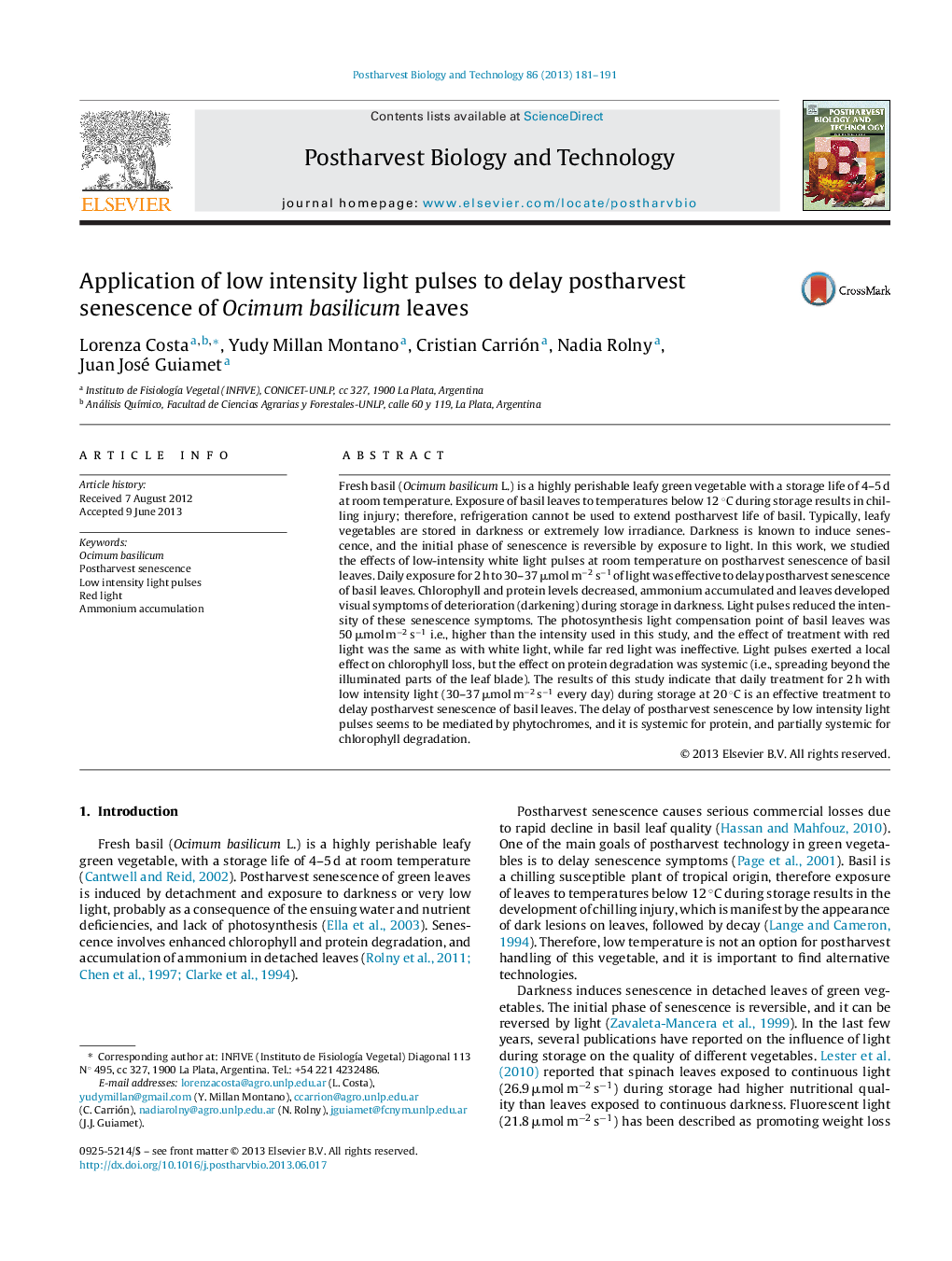| Article ID | Journal | Published Year | Pages | File Type |
|---|---|---|---|---|
| 6378736 | Postharvest Biology and Technology | 2013 | 11 Pages |
â¢Low intensity light pulses during storage were effective in delaying senescence of basil leaves.â¢Light effects during postharvest senescence of basil were at least partly systemic.â¢Modulation of protein degradation during senescence of basil seems mediated by phytochrome.
Fresh basil (Ocimum basilicum L.) is a highly perishable leafy green vegetable with a storage life of 4-5 d at room temperature. Exposure of basil leaves to temperatures below 12 °C during storage results in chilling injury; therefore, refrigeration cannot be used to extend postharvest life of basil. Typically, leafy vegetables are stored in darkness or extremely low irradiance. Darkness is known to induce senescence, and the initial phase of senescence is reversible by exposure to light. In this work, we studied the effects of low-intensity white light pulses at room temperature on postharvest senescence of basil leaves. Daily exposure for 2 h to 30-37 μmol mâ2 sâ1 of light was effective to delay postharvest senescence of basil leaves. Chlorophyll and protein levels decreased, ammonium accumulated and leaves developed visual symptoms of deterioration (darkening) during storage in darkness. Light pulses reduced the intensity of these senescence symptoms. The photosynthesis light compensation point of basil leaves was 50 μmol mâ2 sâ1 i.e., higher than the intensity used in this study, and the effect of treatment with red light was the same as with white light, while far red light was ineffective. Light pulses exerted a local effect on chlorophyll loss, but the effect on protein degradation was systemic (i.e., spreading beyond the illuminated parts of the leaf blade). The results of this study indicate that daily treatment for 2 h with low intensity light (30-37 μmol mâ2 sâ1 every day) during storage at 20 °C is an effective treatment to delay postharvest senescence of basil leaves. The delay of postharvest senescence by low intensity light pulses seems to be mediated by phytochromes, and it is systemic for protein, and partially systemic for chlorophyll degradation.
